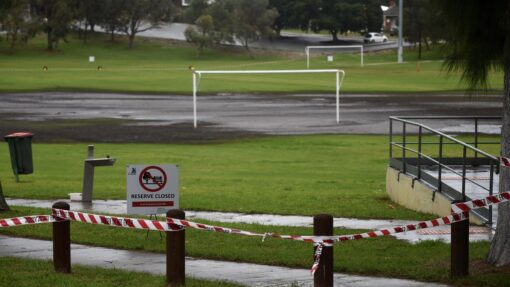How regional Australia beats the heat
Stephanie Gardiner |

Kenn Donohoe is standing on the side of a remote highway in Western Australia in 46-degree heat.
It’s the day after Onslow, a small beachside town in the Pilbara, hit 50.7C, matching the nation’s hottest day on record.
“It’s like a furnace. As you’re walking down the street, you can feel the heat in your lungs,” Mr Donohoe, chief executive of the Shire of Ashburton, told AAP.
“It’s a very hot and dry heat. A lot of the wind is coming off the desert.”
Onslow residents experienced temperatures of 40C and above for several days this month, with the record set at the airport on January 13.
Paramedics were on the tarmac that day, when a mechanical issue temporarily grounded a Royal Flying Doctor Service aircraft.
“All in a day’s work,” Onslow’s St John Ambulance posted on Facebook.
Mr Donohoe said residents filled their baths with ice, draped cool sheets over fans, or stayed inside until the evening.
“People adjust and adapt. They might go fishing, some people will go to the pool, others will go to the resort after work for a lemon, lime and bitters.”
“It’s a way of life.”
While many in regional and rural communities are used to hot conditions, climate scientists warn heatwaves will intensify and become more frequent in coming years.
The Bureau of Meteorology’s State of the Climate report says Australia will experience increased temperatures and fewer cold weather extremes, with more periods of drought.
Associate Professor Brent Jacobs, from the University of Technology Sydney’s Institute for Sustainable Futures, says regional communities are particularly vulnerable in heatwaves.
The heat stresses crops and livestock, and increases demand on water and energy networks, which may not be reliable.
“Ten years ago if you talked to people in rural areas, they would have said ‘I don’t know, I’m not sure about climate change, it’s always hot out here’,” Dr Jacobs said.
“I think those ideas have changed. They’ve been exposed to long term droughts and intense and extreme bushfires, which come about through increasing temperatures.
“They’re much more aware of the idea.”
Dr Jacobs’ research focuses on climate adaptation strategies, working closely with local councils to help plan for weather extremes.
A key to heat resilience is planting more trees, he said.
“It’s about providing shade. Trees evaporate water into the atmosphere, so they cool down the environment as well.
“But, of course, trees need water.”
Many towns across Australia have tree planting programs and plans for more green spaces.
The Australian Local Government Association says most councils have made climate change adaptation a priority, with strategies to both utilise and beat the heat, like community solar farms and planting more trees.
Dubbo, in western NSW, experiences an increasing number of consecutive days over 38C in summer. The council maintains about 15,000 street trees to absorb heat, create shade and reduce solar radiation.
The Sunshine Coast Council, in Queensland, is using sensors and thermal heat cameras to collect data on temperature, people movement and water use to inform its climate policies.
The NSW government will ban dark roofs in new housing estates, while heat-reflective treatments are being trialled on roads in many capital cities.
Doctors say managing heat is also important for health and wellbeing.
Recent research by The Australian National University’s Institute for Climate, Energy and Disaster Solutions found there were more than 36,000 heat-related deaths between 2006 and 2017.
Dr John Van Der Kallen, chair of Doctors for the Environment, said deaths from heat exceed those from all other weather extremes combined.
“Facilities need to be created so people can have refuge during extreme events,” he said.
“You need to have refuges where people can have air-conditioning. But it needs to be a self-reliant set-up, you can’t expect the electricity to come from 1000 kilometres away.
“In the meantime, we need to make sure there are more green areas.”
Dr Jacobs said it’s important to recognise higher-than-average temperatures in cooler months too.
“People don’t realise increased temperatures in winter can have impacts on ecological systems and agriculture in the same way as high temperature heatwaves can.”
On those hot days in Onslow, Ashburton Shire workers clock on at 4am to avoid the worst of the weather.
“It’s a wonderful region … but you work with the heat and the environment,” Mr Donohoe said.
“We have the wet season and the cyclonic season: if you work in this region, you’ve got to work with the environment and understand what it is.”
AAP


